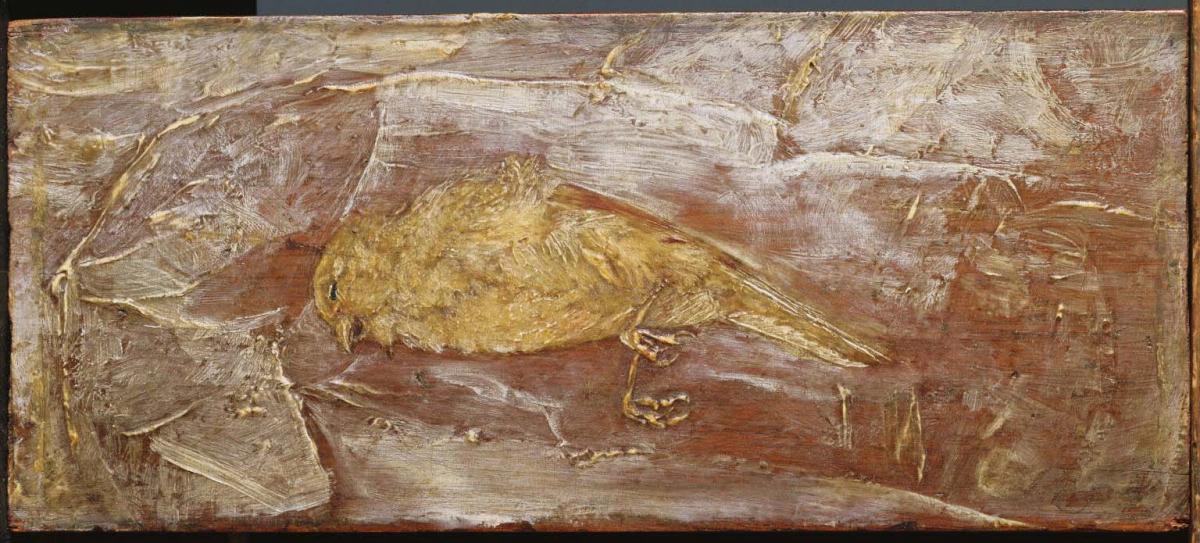Dead Bird
Albert Pinkham Ryder ( 1890s )

Though intimate and small in scale, Dead Bird is one of Ryder’s most powerful images. It is also a testimony to his masterful draftsmanship, even as it explores a recurrent illusory theme: the coexistence of the corporeal and ethereal. With uncharacteristic directness, Ryder suggests an association with traditional nineteenth-century memento mori images. Starkly realistic details such as the rigidly curled claws, rendered in heavy impasto, and the subtle textural contrasts of plumage and beak, create a moving evocation of suffering and death. Enhancing the mood is a thin veil of paint surrounding the bird; this diaphanous layer of oil was laid on in short, sketchy strokes suggesting rapid, though careful, execution.
While in his Biblical scenes Ryder’s approach is imaginative and narrative, in the Dead Bird it is spontaneous and direct. Although a bird was often used as a symbol of the soul, the dead bird appeared in the literature and imagery of Ryder’s contemporaries as a “lamentation over lost innocence” and lost love. The theme had a lasting attraction for Duncan Phillips, whose collection also contains: Henry Varnum Poor’s Dead Crow, ca. 1943 (purchased in 1944) and Wounded Gull, 1943, by Morris Graves (bought in 1945).